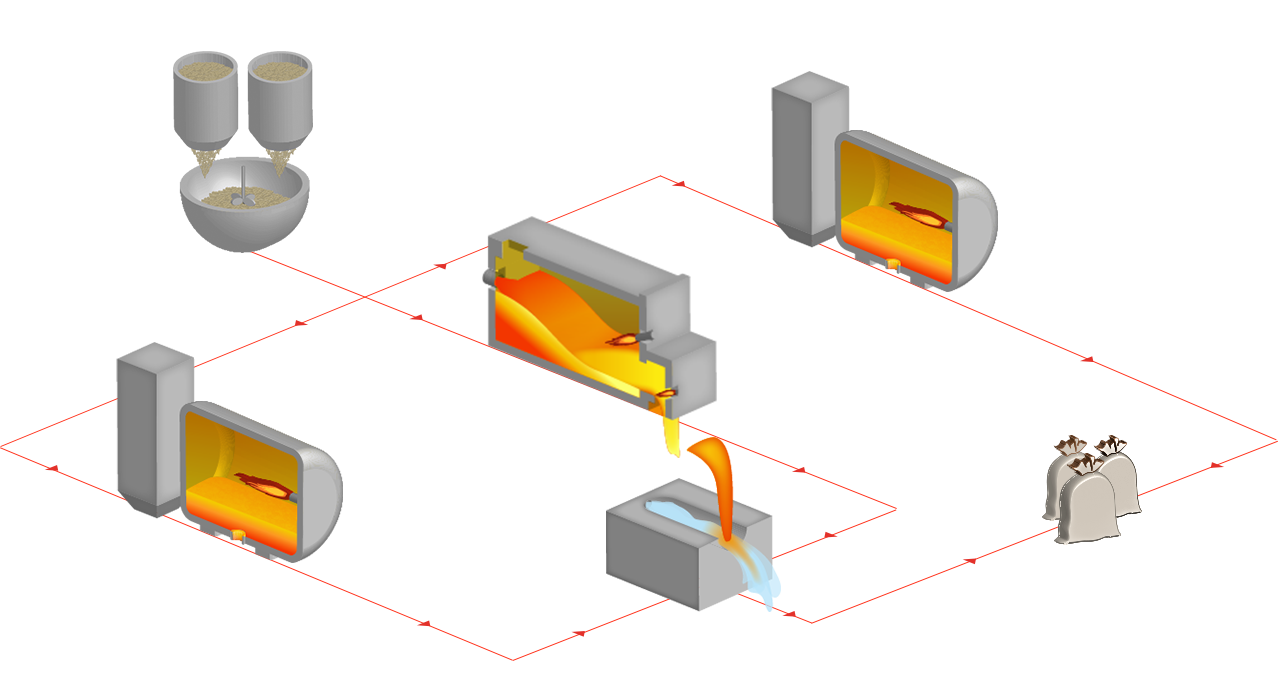All customerprocesses that use gases - Strategic application technology
Nested Applications
Nested Applications
Categories Navigation
Asset Publisher
Frit and color pigment
In the frit- and mineral colour pigment production, the raw materials of the batch are generally stored in silos. Based on the recipe the components are charged into a mixer in a pre-defined order to eliminate separation. The mixed batch is then transported to the batch charger – usually of screw type – and fed, in a certain amount for each charge, to a smelting aggregate, which may be a hearth furnace or a rotary furnace . In case of colour pigments, the smelting aggregate is generally a rotary furnace. The batch is melted in a melting area what can be air-fuel or oxy-fuel fired. After a pre-defined melting time, the material is withdrawn from the furnace through a heated throat (in case of a hearth furnace) or poured out from the drum of the rotary furnace and quenched with water on a chute or a conveyor . The powdery product is collected in big bags or – after performing a drying measure out into a paper bag.
In case of frit we distinguish three different types:
a. Ceramic/glass frit
b. Enamel frit
c. Low melting point frit
The major components, depend on the different types of frit, are:
- Feldspar, sand, calcium carbonate, dolomite, zinc oxide, zirconium compounds for ceramic/glass frit
- Sand, borax, titanium oxide, sodium nitrate and different fluorides for Enamel frit
- Red lead (Pb3O4), sand, zinc oxide, boric acid for low melting point frit

